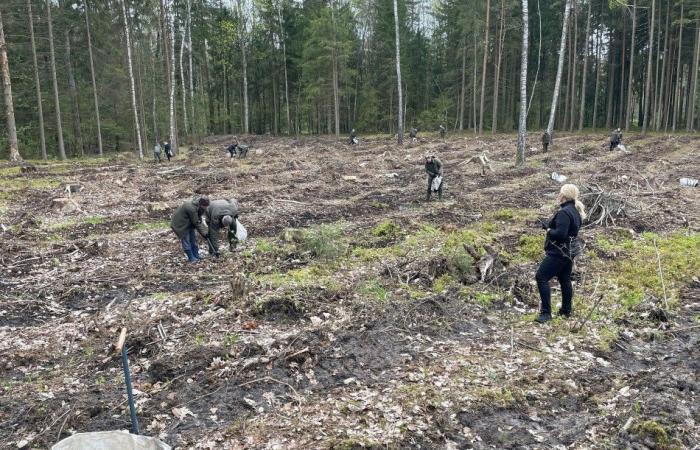Data is collected, systematized and presented to the public through the National Forest Inventory (NMI). During it, the most important indicators of forests are determined by means of direct measurements: volume and growth of wood, volumes of dead and felled trees and accumulated wood, tree damage, spread of undergrowth and undergrowth, controlled felling, restoration, establishment and spontaneous spread.
How many trees are planted and in what forms?
During the NMI, it was found that recently, about 30.8 million trees are planted annually in the country. saplings in reforestation and about 3.1 million – planting a new forest. About 8.2 thousand trees are regenerated every year. ha area (average density – 3750 pcs./ha), and approximately 0.9 thousand are newly planted. ha area, average density – 3400 units/ha.
About 11.7 thousand are restored by self-recovery. ha, ie about 60 percent. of the entire recoverable area. It is interesting that the share of self-regenerating area is constantly growing and has increased by 6 percent over the last 16 years (2007-2023). points.
What is the relationship between spontaneous and artificial regeneration of stands?
NMI recorded the fact that the share of plantations in good condition from all planted stands is increasing. This figure increased from 58 to 82 percent in 16 years.
In 16 years, the species composition of the regenerated stands also changed (see graph). Obvious new trends in the dominant tree species of the restored stands include a more than doubled share of spruce, a significant increase in the areas of restored stands of birch and black alder, as well as an intensification of the self-recovery of aspen and white alder, which is ambiguously assessed.
Plantation forests? Really?
Often in the public space, announcements about forest plantings are accompanied by comments about the fact that plantation forests are planted during them, that the planted forest is supposedly only intended for obtaining wood and is not acceptable from the point of view of biodiversity.
The State Forestry Service informs that plantation forests are forests in which stands of fast-growing tree species are grown using rapid cultivation technologies, the age of which should be at least 15 years old when felled. Only stands of the same age class can be assigned to these forests.
Plantation forests make up a small part of Group IV farm forests. Currently, 363 ha of IVB group short-cut plantation forests are registered in the Forestry State Cadastre, where the purpose of farming is to grow as much wood as possible as quickly as possible.
The unique indicators of the plantation forest are the short time of growing the stand (for comparison, the minimum age of 101 years is applied to the pine forests of the IVA group of farm forests) and the purity and age of the stands.
It is forbidden to grow plantation forests in the clearings of non-plantation forests or in the areas of dead plants, shrubs and stands of these forests, in forest squares and forest clearings.
The State Forest Service is an institution under the Ministry of the Environment of the Republic of Lithuania, which implements state policy in the field of natural resources (forests, national genetic resources of plants) management.
Tags: wave forest plantations swept country
-





